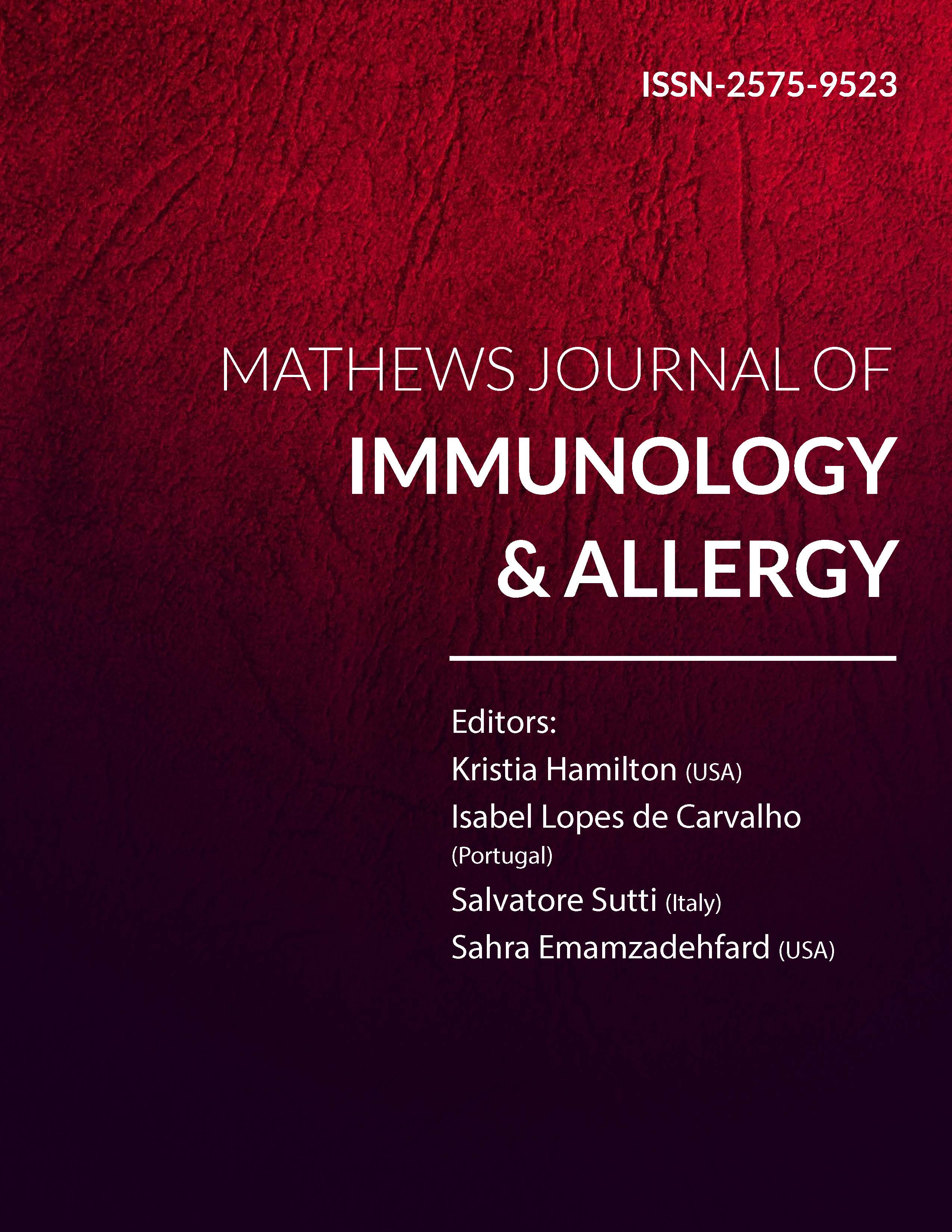
Information Links
Previous Issues Volume 4, Issue 1 - 2020
Seroprevalence of Dengue Fever among Febrile Patients Attending Kura General Hospital Kano, Nigeria
Farouk S. Nas1, Muhammad Ali2*, Lurwan Mu’azu3, Muhammad S. Abdallah4
1Department of Biological Sciences, Bayero University Kano, Nigeria
2Department of Microbiology, Federal University Gusau, Nigeria
3Department of Biological Sciences, Federal University Gusau, Nigeria
3Department of Microbiology, Yobe State University Damaturu, Nigeria
*Corresponding Author: Muhammad Ali, Department of Microbiology, Federal University Gusau, Nigeria, Tel: +234-703-296-7252; E-mail: [email protected]
Received Date: November 11, 2020
Published Date: December 21, 2020
Copyright: Nas FS, et al. © 2020.
Citation: Nas FS, et al. (2020). Seroprevalence of Dengue Fever among Febrile Patients Attending Kura General Hospital Kano, Nigeria?. Mathews J Immunol Allergy. (4)1:10.
ABSTRACT
Dengue is the most rapidly spreading mosquito-borne viral disease with an estimated incidence of millions of cases per years. The study was aimed to determine the seroprevalence of dengue fever among febrile patients attending Kura General Hospital Kano, Northern Nigeria. Five milliliter (5 ml) of blood samples were collected from a total of 137 subjects (male, n= 63 and female, n=74) of all ages presenting febrile conditions suggestive of malaria or related diseases for testing of malaria parasites and antibody detection against dengue virus from May, 2018 to October, 2018. Examination of blood samples for detection of malaria parasite was conducted with thick blood film using Giemsa Staining technique while dengue virus antigen was detected using Dengue virus IgM/IgG antibody ELISA kits. The result showed that 13 subjects out of 103 were positive for dengue virus fever which accounted for 9.4% of the tested samples. Highest incidence of dengue virus fever was recorded among subjects of 21 – 40 years with total of 5 (3.6%) positive cases. On the basis of gender, 9 samples were men (6.5%) while females recorded only 4 positive samples (2.9%). From the result, 8 samples were infected for both malaria and dengue virus fever and this represents 5.8% of the total samples examined. No significant differences on the prevalence of dengue virus among age categories and sex of the subjects at p < 0.05. It is concluded that dengue virus fever is an emerging infection among the population in the study area.